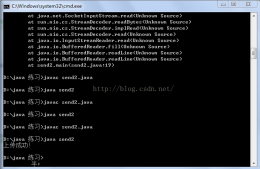mybatis 模糊查询和动态sql语句
模糊查询
对数据库最常用的操作就是查询了,但是如何使用mybatis进行模糊查询呢?下面先看一个简单的模糊查询
|
1
2
3
4
5
6
7
|
<select id="select01" resultmap="basicresultmap"> select * from oa_employee where emp_name like #{asd} </select> |
这是一条伪模糊查询, 因为没有实现真正的模糊 “%”。参数为字符串,所以#{}中内容不被限制。但是应该如何插入 % 字符呢。 我们首先想到的是传递字符串参数时将%插入到字符串中 “张%”,但是这种方法操作略微繁琐了一些。 下面提供了使用sql方法的策略
|
1
2
3
4
5
6
7
|
<select id="select01" resultmap="basicresultmap"> select * from oa_employee where emp_name like concat( #{asd} ,'%') </select> |
另外一种不推荐的写法给大家
|
1
2
3
4
5
6
7
|
<select id="select01" resultmap="basicresultmap"> select * from oa_employee where emp_name like '${emp_name}%' </select> |
#{} 是采用预编译的写法,也就是jdbc中的perparestatement,这种写法可以防止sql注入,但${}这种写法是不采用预编译,其中的参数写成类中的属性或者map的key值或者为接口中注解的参数名。
mybatis 提供了bind 标签。下面举个例子
|
1
2
3
4
5
6
7
8
|
<select id="select01" resultmap="basicresultmap"> <bind name="emp_name" value="'%'+ _parameter.getemp_name() +'%'"/> select * from oa_employee where emp_name like #{emp_name} </select> |
他是在#{}表达式自动填入value值,值得注意的是“_parameter.getemp_name()” 调用的方法是对象中作为查询参数的属性的get方法
多条件查询
多种条件查询的要点是判断查询条件是否为空,拼接sql语句。在mybatis中提供了if标签和where 标签。 下面来介绍两种标签的用法。
if标签
|
1
2
3
4
5
6
7
8
9
10
11
12
13
|
<select id="select01" resultmap="basicresultmap"> select * from oa_employee where 1=1<if test="emp_name != null and emp_name != ''"> and emp_name = #{emp_name } </if> <if test="emp_sex != null and emp_sex != ''"> and sex = #{emp_sex} </if> </select> |
mybatis 中的if标签有些类似于el表达式的使用,test中可以直接写入类中的属性或者key值。
where标签
|
1
2
3
4
5
6
7
8
9
10
11
12
13
14
|
<select id="select01" resultmap="basicresultmap"> select * from oa_employee <where> <if test="emp_name != null and emp_name != ''"> and emp_name = #{emp_name } </if> <if test="emp_sex != null and emp_sex != ''"> and sex = #{emp_sex} </if> </where> </select> |
这里的where标签 替换了前一段代码的 where 1=1 。 mybatis中的where 标签会判断标签内是否有内容, 如果有内容就自动生成where 并把 where 后面的第一个and +一个空格,or+一个空格 去掉。
choose , when 和 otherwise 标签
|
1
2
3
4
5
6
7
8
9
10
11
12
13
14
15
16
17
18
19
|
<select id="select01" resultmap="basicresultmap"> select * from oa_employee <where> <choose> <when test="emp_name != null and emp_name != ''"> and emp_name = #{emp_name } </when> <when test="emp_sex != null and emp_sex != ''"> and sex = #{emp_sex} </when> <otherwise> emp_id = 50 </otherwise> </choose> </where> </select> |
当所有条件不满足时,执行otherwise标签的内容。
trim标签
|
1
2
3
4
5
6
7
8
9
10
11
12
13
|
<select id="select01" resultmap="basicresultmap"> select * from oa_employee <trim prefix="where" prefixoverrides="and |or "> <if test="emp_name != null and emp_name != ''"> and emp_name = #{emp_name } </if> <if test="emp_sex != null and emp_sex != ''"> and sex = #{emp_sex} </if> </trim> |
trim标签的属性及其含义
- - prefix : 标签之间有内容在最前面加入
- - prefixoverrides: 检查内容的最前面是否匹配,匹配就删除
- - suffix: 标签之间有内容在最后面加入
- - suffixoverrides:检查内容的最后面是否匹配,匹配就删除
set标签
set标签常用于update操作,并且会自动抹掉无关的,
|
1
2
3
4
5
6
7
8
9
10
11
12
13
|
<update id="update01" > update oa_employee <set> <if test="emp_name != null and emp_name != ''"> emp_name = #{emp_name} </if> <if test="emp_sex != null and emp_sex != ''"> ,sex = #{emp_sex} </if> </set> where emp_id = 50 </update> |
foreach标签
foreach 用于处理数组或者list集合,下面是一个批量添加的例子
|
1
2
3
4
5
6
7
8
9
|
<insert id="insert01"> insert into oa_employee ( emp_name, sex, fk_dept_id) values <foreach collection="list" item="employee" separator=","> (#{employee.emp_name},#{employee.emp_sex},#{employee.fk_dept_id}) </foreach> </insert> |
其中 如果参数为数组 则collection只能为“array” 参数为list集合则collection只能为 “list” item类似jstl 中的var的作用, 指代容器中的每一个对象。separator=”,”的含义是每条数据以 , 分割。 未注明的属性有 open 和 close 他们的含义是在遍历开始和结束时分别添加其内容。
总结
以上就是这篇文章的全部内容了,希望本文的内容对大家的学习或者工作具有一定的参考学习价值,谢谢大家对服务器之家的支持。如果你想了解更多相关内容请查看下面相关链接
原文链接:https://blog.csdn.net/LLY19960418/article/details/71124247













